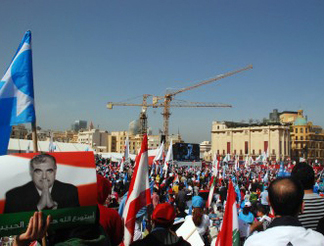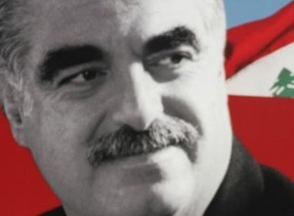
1992 - 1996: After the end of the Civil War, Syria maintains its presence in Lebanon, citing the weakness of the Lebanese national army to implement the Taif Accord. In 1992, the Brotherhood, Cooperation & Coordination Agreement is signed between Syria and Lebanon, followed by the Common Defense and Security Agreement, cementing Syria’s presence in Lebanon. In the same year, a new parliament is elected and the National Assembly passes a law raising the number of parliament members from 108 to 128, in line with the Taif Accord. Rafiq Hariri (see text below) becomes prime minister of Lebanon for the first time.
In the south of Lebanon, Israel and the South Lebanon Army (SLA) continue to face resistance operations from Hezbollah. Israel launches large-scale military attacks against Lebanon in 1993, 1996, 1998 and 1999. In 1996, after the Israeli operation ‘Grapes of Wrath’, Hezbollah receives international recognition as a force of resistance against the Israeli occupation and wins eight seats in the parliamentary elections.
1998 - 2004: In October 1998, Emile Lahoud is elected president and appoints Selim al-Hoss as prime minister rather than the more popular Rafiq Hariri. In May 2000, Israel and the SLA finally withdraw from the security zone in the south of Lebanon but remain in the villages of Shebaa and Ghagar. Hezbollah continues pressuring Israel to free Lebanese prisoners and to leave the two villages, claiming them as part of Lebanon rather than the occupied Syrian Golan Heights. Rafiq Hariri gains a sweeping victory in the elections of 2000 and is appointed as prime minister despite his uneasy relationship with President Lahoud. Syrian President Hafez al-Assad passes away and is succeeded by his son Bashar. In 2004, the UN issues Resolution 1559, which calls for all foreign presence to leave Lebanese territory. However, Syria chooses to ignore this resolution and maintains its troops and intelligence officers in Lebanon. Despite the objections of Rafiq Hariri and other members of parliament, such as Walid Jumblatt, the term of pro-Syrian President Emile Lahoud is extended for another three years. In response, Rafiq Hariri resigns as prime minister in October.
2005: Five months after his resignation, on Valentine’s Day 2005, Rafiq Hariri’s convoy is hit by a huge car bomb that kills him, some close political allies and nearby civilians. Massive street protests erupt in the country, calling for the withdrawal of Syrian troops from Lebanon, who are perceived as being behind the attack. The pro-Syrian factions, led by Hezbollah, organize a protest in downtown Beirut on 8 March, providing support to the Syrian presence. In response, Saad Hariri (son of Rafiq), Walid Jumblatt, Michel Aoun and other politicians organize an anti-Syrian demonstration on 14 March. These two dates will come to define the two rival political groups (click here for more information). The March 14 protest initiates the anti-Syrian Cedar Revolution, which - in combination with pressure from Western countries - finally causes Syria to leave the country on 26 April 2005. Nevertheless, a series of political assassinations and car bombs targeting anti-Syrian politicians and activists continues.
July 2006: Starting with the killing of Israeli Defense Force (IDF) members, a 34-day war between Hezbollah and Israel again shakes Lebanon in the summer of 2006. The fight results in many casualties and injuries, and the infrastructure of Lebanon, such as the power plant at Jiyyeh, is effectively destroyed; the latter resulting in tons of oil spilled in the sea. As a result of this war, the UNIFIL increases its presence in the country and the Lebanese Forces start deploying members all over Lebanon.
Rafiq al-Hariri, a Sunni Muslim, was born in Saida in 1944. As a former Saudi diplomatic representative, he played a significant role in the 1990 Taif Accord that ended Lebanon’s Civil War. Hariri was the prime minister of Lebanon from 1992 to 1998 and again from 2000 until his resignation in October 2004. In total, he headed five cabinets and dominated the country’s post-war political and economic climate. Hariri was behind Solidere, turning damaged post-war downtown into the modern area it is today. In addition, he was responsible for the privatization of major industries such as energy, telecommunications and civil engineering. By simplifying tax codes and providing tax breaks to foreign investors, Hariri supported foreign companies and individuals taking an interest in Lebanon’s developmental potential. As the leader of the Future Movement, he was against the continued presence of Syria in 2005. On 14 February 2005, five months after he resigned as prime minister, Hariri was assassinated by a massive car bomb in front of Beirut’s St George Hotel; the investigation into this assassination by the Special Tribunal for Lebanon (STL) is still ongoing. Hariri’s death led to massive political unrest in Lebanon, including the Cedar Revolution and finally the withdrawal of Syrian troops from Lebanon. Rafiq Hariri was succeeded by his son Saad Hariri as leader of the Future Party.


